Understanding the Importance of a Cover Letter
In the competitive landscape of job applications, a well-crafted cover letter serves as your initial introduction to a potential employer. It’s an opportunity to go beyond the confines of your resume and provide a more personalized narrative. It allows you to articulate your interest in the specific role and company, demonstrating that you’ve taken the time to understand their needs and align your qualifications accordingly. A compelling cover letter can significantly increase your chances of getting an interview, making it a critical component of your job search strategy. A cover letter is your first impression, so it should be perfect.
What is a Cover Letter
A cover letter is a concise document submitted alongside your resume when applying for a job. It acts as a personalized introduction, allowing you to showcase your skills, experience, and enthusiasm for a particular position. It should highlight your relevant qualifications and explain why you are a good fit for the company and the role. Think of it as your elevator pitch, a brief but persuasive summary that grabs the reader’s attention and encourages them to learn more about you through your resume.
Why is a Cover Letter Important
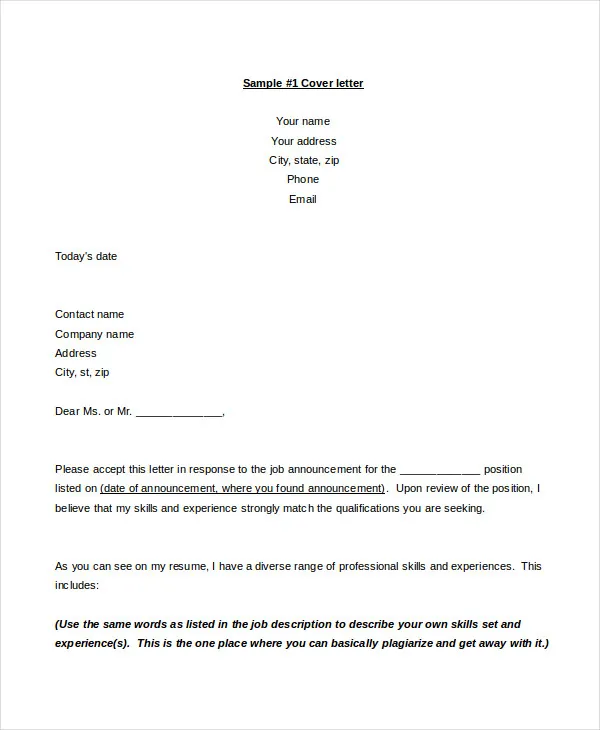
A cover letter is important for a few reasons. First, it gives you the chance to demonstrate your communication skills and writing ability. Secondly, it allows you to show your personality and passion for the role. Furthermore, it gives you the opportunity to tailor your application to the specific requirements of the job. A well-written cover letter shows employers that you are serious about the position and that you have taken the time to understand the company and its needs. Many hiring managers consider a cover letter a mandatory element of a complete application, and skipping it could lead to your resume being overlooked. Therefore, taking the time to compose a professional cover letter is an investment that can significantly improve your chances of securing an interview.
Key Components of a Cover Letter
A professional cover letter includes several key elements that work together to create a strong and persuasive argument for your candidacy. From the header to the closing, each part of the letter should contribute to a cohesive presentation of your qualifications and your interest in the job. Understanding these components and how to write them effectively will help you create a cover letter that stands out from the competition and grabs the attention of the hiring manager.
Header and Contact Information
The header of your cover letter is the first thing a hiring manager will see, so it’s crucial to get it right. It should include your name, address, phone number, and email address. It is important to use a professional email address, which will help you create a positive first impression. Also, the header should include the date and the hiring manager’s name and title, and the company’s address, if known. Proper formatting ensures your contact information is easily accessible and looks professional. Ensure your address is up-to-date and reachable.
Formatting Your Header Correctly
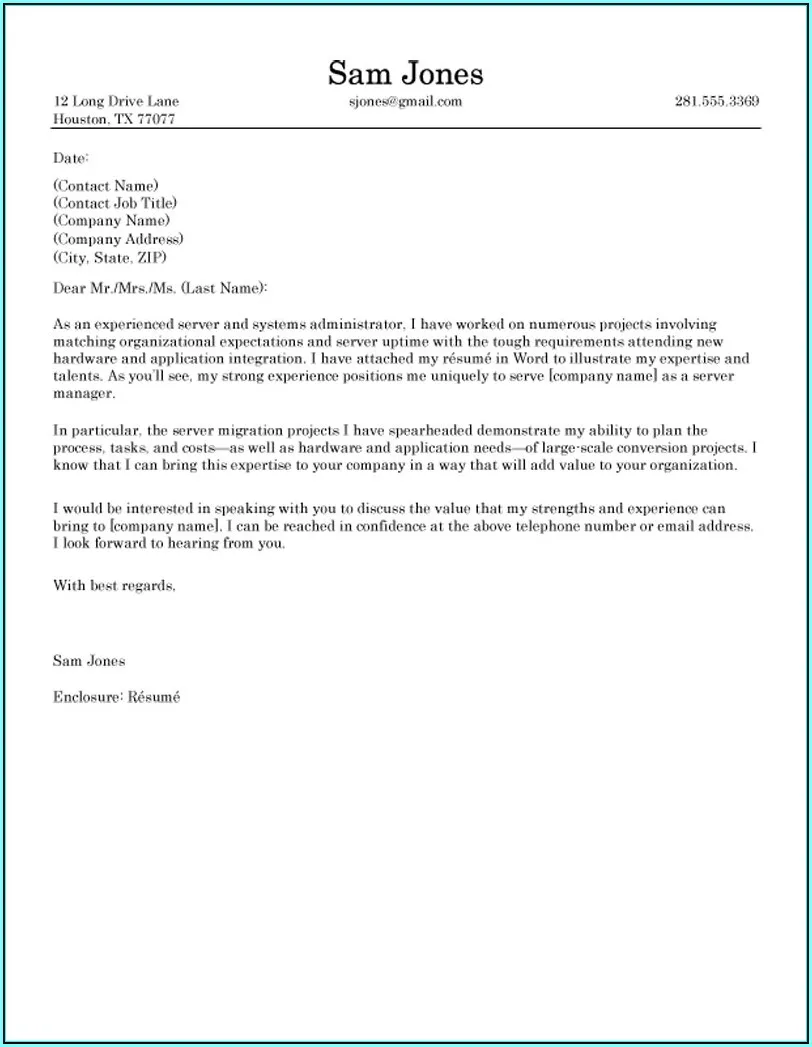
When formatting your header, consistency is key. Use a clear, readable font such as Arial, Times New Roman, or Calibri. The font size should be consistent with the rest of the document, typically 10-12 points. Place your contact information either at the top left or right of the page, aligning it neatly. The date should be placed below your information. Include the hiring manager’s name and title beneath the date, followed by the company’s address. This structure demonstrates attention to detail and professionalism.
Greeting the Hiring Manager
The greeting is your initial point of contact with the hiring manager, so it’s important to get it right. The most professional approach is to address the hiring manager by name. Researching the hiring manager’s name is a must, as using “Dear Mr./Ms. [Last Name]” shows that you have taken the time to do your research and personalize your application. If you are unable to find the hiring manager’s name, using a general greeting such as “Dear Hiring Manager” is appropriate. Avoid generic greetings like “To Whom It May Concern” because it looks impersonal and may reduce your chances of making a positive impression.
Crafting the Opening Paragraph
The opening paragraph sets the tone for your entire cover letter. It should immediately capture the reader’s attention and clearly state the purpose of your letter: the job you are applying for. Mention where you found the job posting and highlight your most relevant qualifications. This will help you grab the reader’s attention immediately, showing you know the role you are applying for. Make sure you convey your enthusiasm for the position. Keep it concise and focused on the essentials. This is your chance to make a strong first impression and encourage the reader to continue reading.
Stating Your Purpose
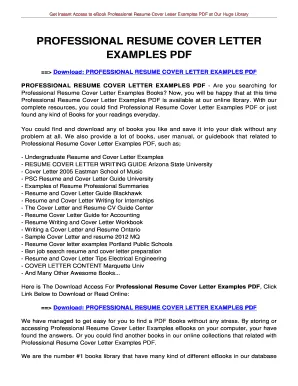
Clearly state your intention to apply for the specific position and where you saw the job posting, such as a job board, company website, or referral. This shows the recruiter that you are applying for a specific role, not just sending out a generic application. Briefly mention your most relevant qualification or a key skill that aligns with the job description, signaling that you meet their needs. This helps the recruiter quickly understand your potential fit for the role and encourages them to read further. Be straightforward and make it clear why you’re writing, which improves your chances of getting noticed.
Highlighting Skills and Experience
The body of your cover letter is where you provide more detailed information about your skills and experience. You should highlight the most relevant aspects of your background that align with the job requirements. This section allows you to demonstrate how your qualifications meet the specific needs of the role. Your goal is to make a strong case for why you are the best candidate. Using specific examples, quantifying your accomplishments, and tailoring your letter to the job description are all effective strategies for showcasing your value.
Tailoring Your Letter to the Job
Customize your cover letter for each job application. This means carefully reviewing the job description and identifying the key skills and qualifications the employer is seeking. Then, select examples from your experience that demonstrate those skills. This involves more than simply listing your previous job titles; instead, focus on how you have used your skills and experiences to achieve positive outcomes. By tailoring your letter, you show the hiring manager that you are genuinely interested in the role and that you have taken the time to understand the company’s needs. This personalization makes your application stand out from generic ones.
Showcasing Relevant Skills
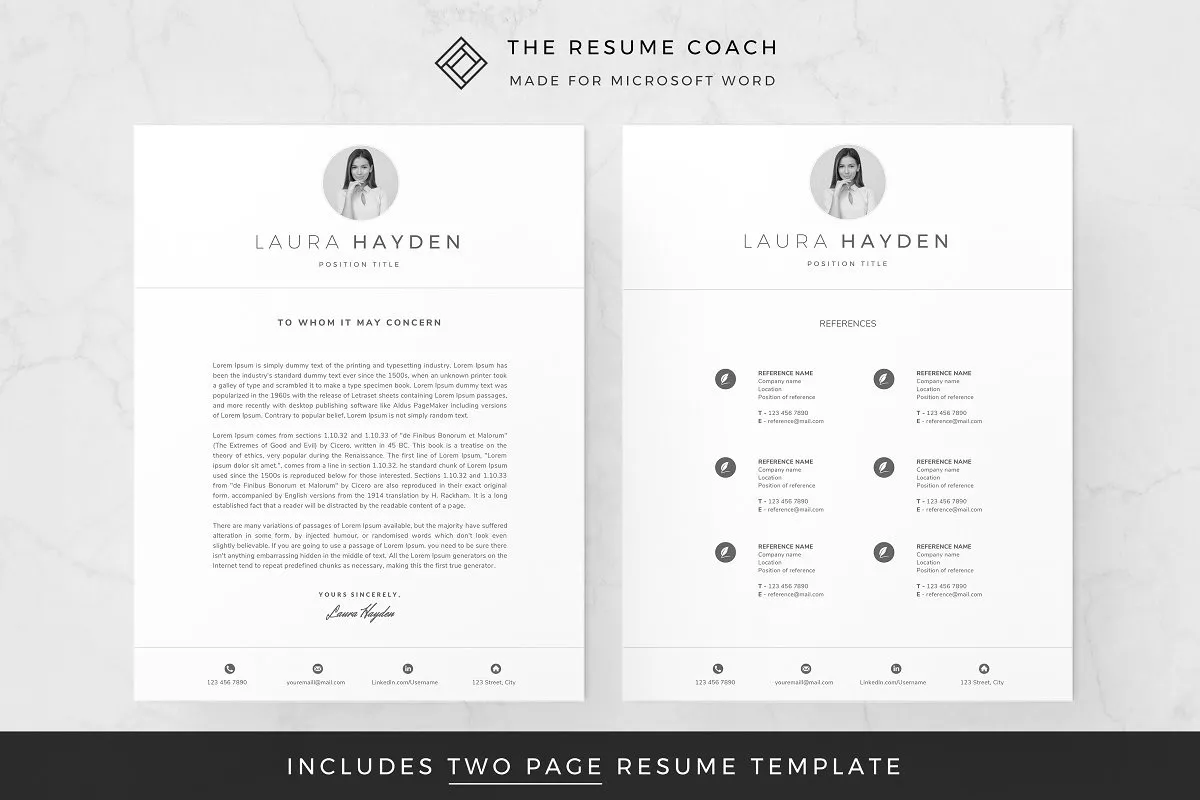
Choose the most relevant skills and experiences that match the job description’s requirements. Focus on the skills and experiences that make you stand out. Provide specific examples from your previous roles or projects. Quantify your achievements whenever possible to demonstrate the impact you have made in the past. Use keywords from the job description naturally throughout your letter, so the hiring manager can quickly see how you match their requirements. Showing how your abilities meet the needs of the job enhances your chances of being interviewed.
Quantifying Accomplishments
Use numbers and data to illustrate your achievements. Instead of just saying that you improved sales, specify by how much, such as “Increased sales by 15% in one quarter.” This provides tangible evidence of your skills and abilities, and it shows the hiring manager your success in previous roles. Use metrics, percentages, and dollar amounts to highlight your accomplishments. Quantifying your achievements shows the impact you’ve made and how you can contribute to the new company. These figures demonstrate the value you can bring to the role.
Expressing Enthusiasm and Interest
Demonstrate your enthusiasm for the role and the company. Explain what excites you about the opportunity. Connect your skills and experience to the company’s mission or values. Show that you have researched the company and understand its goals. Expressing your excitement and interest is a good way to get noticed. Your cover letter should convey a sense of eagerness. Your goal is to build a good rapport and strengthen your candidacy.
Writing a Strong Closing Paragraph
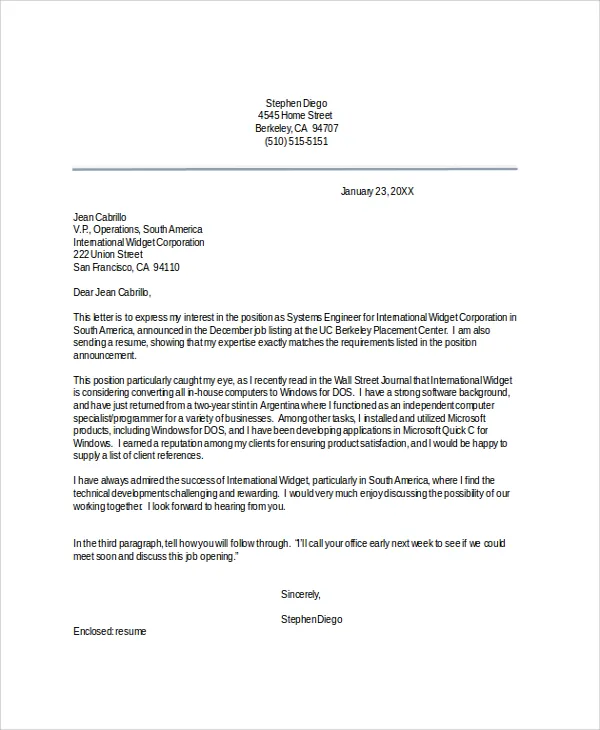
Your closing paragraph should summarize your interest in the position, reiterate your key qualifications, and express your enthusiasm for the opportunity. It’s a final opportunity to make a positive impression and reinforce your value as a candidate. Make sure you thank the recipient for their time and consideration. You also want to include a clear call to action. This is your final opportunity to show your professionalism, and your goal is to leave the recruiter with a lasting impression.
Thanking the Recipient
Express gratitude to the hiring manager for their time and consideration. Keep the tone professional. A simple “Thank you for your time and consideration” is sufficient. Showing your appreciation leaves a positive impression and reinforces the value you place on the opportunity. This demonstrates professionalism and courtesy. This final gesture can positively impact the overall impression of your application.
Including a Call to Action
Include a call to action, inviting the hiring manager to contact you. State that you are available for an interview at their earliest convenience. Provide your contact information again to make it easy for the recruiter to reach you. This shows your eagerness and makes it simple for them to take the next steps. End by expressing your interest in discussing your qualifications. This prompt reinforces your interest and encourages the hiring manager to follow up. This final step ensures you are seen as proactive and professional.
Formatting and Proofreading
Proper formatting and proofreading are critical for creating a professional cover letter. Errors can undermine your credibility and make you look careless. Proper formatting ensures that your cover letter is easy to read and visually appealing. Investing the time in formatting and proofreading will positively affect the impression you make, increasing your chances of getting an interview.
Choosing the Right Font and Format
Select a professional and easy-to-read font like Arial, Times New Roman, or Calibri. Use a font size between 10 and 12 points. Use consistent formatting throughout your cover letter, including spacing, alignment, and bullet points. Maintain a clean and uncluttered layout with clear sections. Choose standard margins to make the content easy to read. Correct formatting shows your attention to detail, improving your application’s professionalism.
Proofreading for Errors
Thoroughly proofread your cover letter for any grammatical errors, typos, and spelling mistakes. Use a spell checker, but also carefully review the letter yourself. Read your letter aloud to identify awkward phrasing or errors that might not be obvious when reading silently. Ask a friend or family member to review the letter. Proofreading ensures that your application is polished and professional. Make sure to present yourself well and make a lasting impression.
Sample Cover Letter Templates
Leveraging sample cover letter templates is a practical way to start writing your own. Using the right template can help you save time. These templates provide a good structure. Select a template that best aligns with your situation, and adapt it to your specific needs.
Template 1 Entry-Level
Entry-level cover letters are great for recent graduates or those with limited work experience. The key is to highlight your education, internships, and relevant coursework. Showcase any soft skills like communication, teamwork, or problem-solving. The aim is to demonstrate enthusiasm and a strong interest in the position. You want to show your potential to the recruiter. Tailor the template to the specific role. Your cover letter should showcase your skills and education.
Template 2 Experienced Professionals
Experienced professionals should focus on previous accomplishments. Showcase achievements and the results they have delivered. Use quantifiable metrics to demonstrate the impact. The goal is to prove your value to the new company. Tailor the template to match the needs of the role. Emphasize transferable skills from previous roles. Your focus should be your ability to achieve success.
Template 3 Career Change
If you’re changing careers, focus on transferable skills. Highlight how your experience is relevant to the new role. Show that you have the necessary skills for the job. Address the potential gaps in your experience. Emphasize your transferable skills, such as project management, leadership, and communication skills. Convince them that your background is transferable. This template should emphasize your adaptability.
Common Mistakes to Avoid
Several common mistakes can undermine your cover letter. You must avoid these to present yourself in the best possible light. Understanding these pitfalls can prevent errors and help your application stand out.
Generic Cover Letters
Avoid using a generic cover letter that is not tailored to the specific job. Generic letters indicate a lack of effort and interest, and they make it difficult for the hiring manager to see your fit for the role. Tailoring your letter to each application shows that you are genuinely interested in the position and have the required skills. Research the company and customize your letter. A generic cover letter reduces the chances of getting noticed.
Typos and Grammatical Errors
Always thoroughly proofread your cover letter for any typos and grammatical errors. Mistakes indicate a lack of attention to detail. Review your work for clarity, accuracy, and professionalism. This shows the recruiter that you care about the job, increasing your chances of getting hired. Ensure your message is clear and easy to understand. A few mistakes can negatively impact your chances, even if you have the qualifications.
Overusing Jargon
Avoid using excessive jargon, clichés, or overly complex language. Such language can make your letter difficult to understand, and it may undermine your credibility. Focus on clear, concise language that effectively communicates your skills and experience. Write in a professional yet accessible style. Your goal is to ensure your qualifications are readily understood by the hiring manager. Use language that is appropriate for the industry.
Final Thoughts and Next Steps
Writing an effective cover letter is a critical step in the job application process. By following the guidelines, you can craft a letter that highlights your skills and grabs the attention of potential employers. With careful attention to detail and consistent effort, you can improve your chances of landing the job. Take the time to perfect your cover letter. This is your chance to showcase your personality. Investing the time now will pay dividends later.
